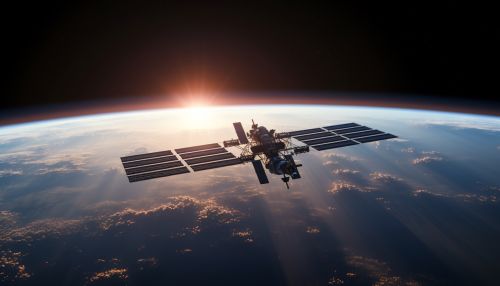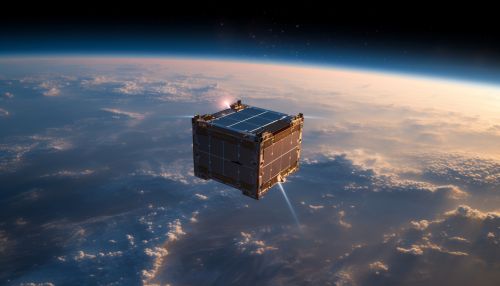Low Earth orbit
Overview
Low Earth orbit (LEO) is an orbit around Earth that lies between the planet's surface and an altitude of 2,000 kilometers (1,200 miles). This is the region of space where the majority of satellites operate due to its proximity to Earth and relative ease of access compared to higher orbits. The unique characteristics of LEO, such as its low altitude and high velocity, make it an ideal location for certain types of missions and technologies.


Characteristics
LEO is characterized by an altitude of less than 2,000 kilometers, but most satellites and the International Space Station (ISS) operate at altitudes of 800 to 1,500 kilometers. Satellites in LEO travel at speeds of about 7.8 kilometers per second (28,000 kilometers per hour), which means they complete an orbit around Earth in approximately 90 to 120 minutes.
The environment in LEO is distinct from that on Earth's surface or in higher orbits. It is subject to significant atmospheric drag, which can cause satellites to gradually lose altitude and eventually re-enter the Earth's atmosphere. This necessitates regular altitude adjustments to maintain a stable orbit. Additionally, objects in LEO are subject to considerable amounts of radiation from the Van Allen radiation belts, which can pose a risk to both electronic equipment and astronauts.
Applications
LEO is used for a variety of purposes, including scientific research, Earth observation, and telecommunications. The International Space Station, which serves as a laboratory for research in biology, physics, astronomy, and meteorology, is perhaps the most well-known object in LEO.


Many Earth observation satellites, such as those used for weather forecasting and environmental monitoring, also operate in LEO. This is because their proximity to Earth allows for high-resolution imaging and data collection. Similarly, many telecommunications satellites are placed in LEO to provide services such as GPS, television broadcasting, and internet connectivity.
In recent years, there has been a significant increase in the number of satellites in LEO due to the rise of satellite constellations such as SpaceX's Starlink and OneWeb. These constellations aim to provide global broadband internet coverage by deploying hundreds or even thousands of small satellites in LEO.
Challenges
While LEO offers many advantages, it also presents several challenges. One of the most significant is the issue of space debris. With the increasing number of satellites being launched into LEO, the risk of collisions increases. Even small pieces of debris can cause significant damage due to the high velocities involved. Various strategies have been proposed to mitigate this issue, including improved tracking of space debris, design of satellites to minimize the creation of debris, and active removal of debris.


Another challenge is the effect of the Earth's atmosphere. Although the atmosphere at LEO altitudes is extremely thin, it still exerts a drag force on satellites. This force gradually reduces the satellite's altitude and can eventually cause it to re-enter the Earth's atmosphere and burn up. To counteract this, satellites in LEO often need to carry extra fuel to perform regular altitude adjustments.
Future of LEO
The future of LEO is likely to be characterized by an increasing number of satellites, particularly as more companies and countries seek to establish their own satellite constellations. This will undoubtedly exacerbate the issue of space debris, necessitating the development of new strategies and technologies to manage it.
At the same time, advancements in technology may also open up new possibilities for LEO. For example, the development of reusable rockets has significantly reduced the cost of launching satellites into LEO, making it more accessible to a wider range of users. Additionally, new types of satellites, such as CubeSats and other small satellites, are making it possible to perform more complex missions in LEO with smaller and cheaper spacecraft.


